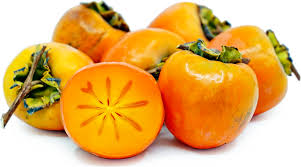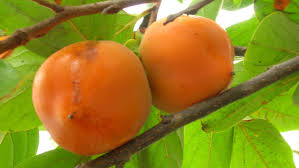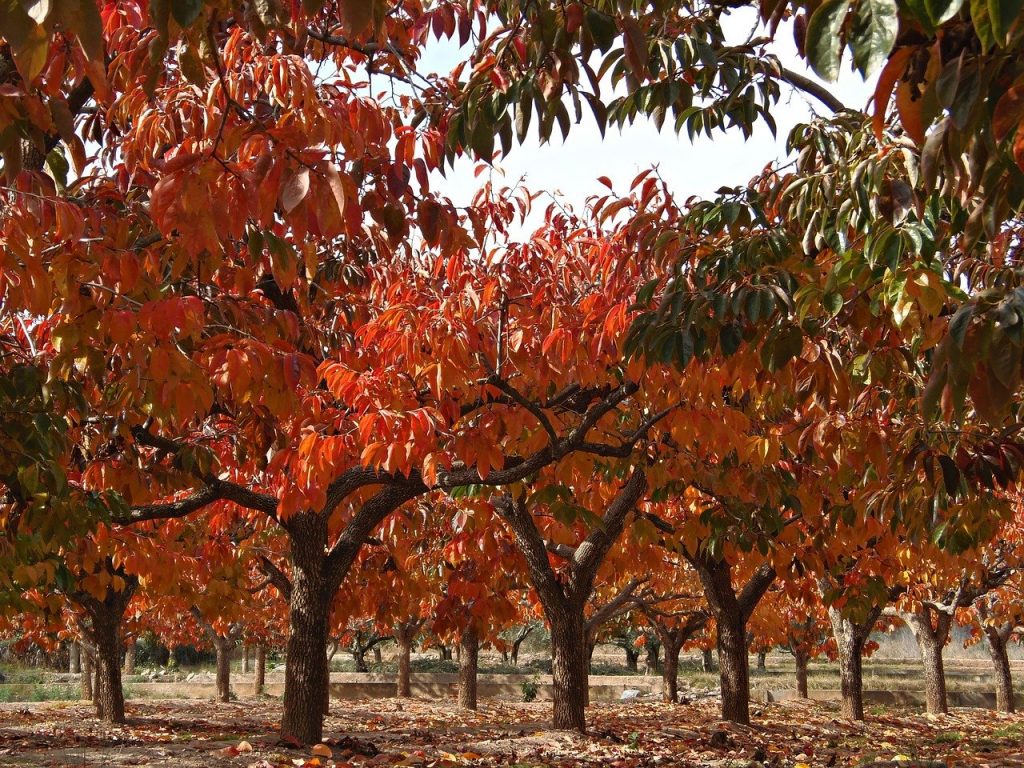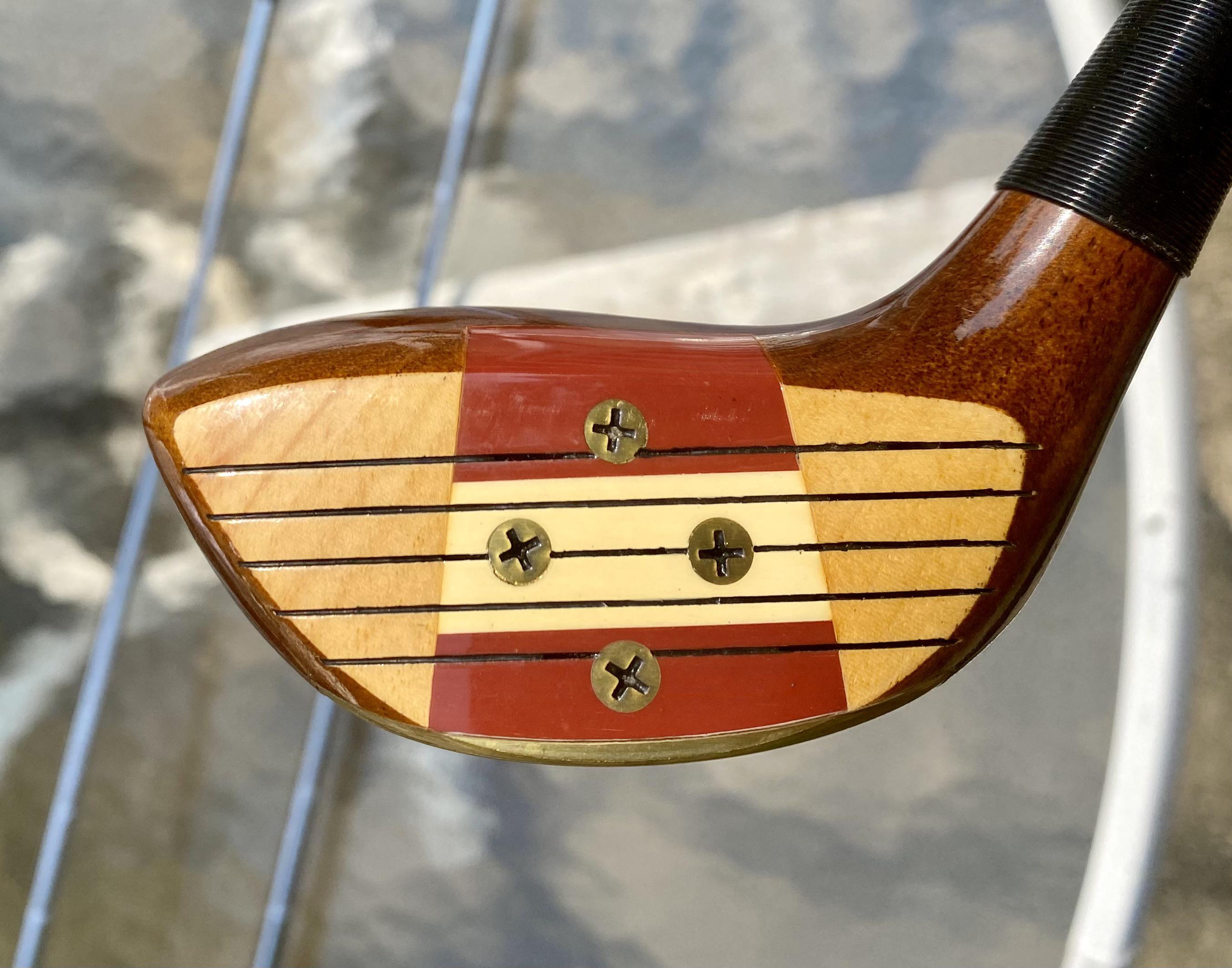Persimmons

My first experience with persimmons was as a young lad about 9 or 10 years old. I remember visiting a cousin who lived in a small Texas Panhandle town when one of them approached me with a reddish-orange baseball-sized orb picked from a large tree in their back yard. When I asked what it was, they told me a persimmon; a deliciously sweet fruit that I should taste. So I took a big bite which I promptly spit out. “That’s disgusting,” I said. “It’s like eating a mouth full of sugar.”
Laughing at my reaction, they told me that if I thought the ripe fruit was bad I should taste it when it’s green. “it’s so sour it’ll make your mouth pucker,” they said. With that knowledge I silently vowed never to eat another persimmon. And to this day, I’ve never broken that vow.
Wild persimmon trees existed in China more than ten thousand years ago. And although there are a number of persimmon varieties and cultivars worldwide, the predominate Asian cultivar is Diospyros kaki (aka D.kaki). This variety can be further divided into two groups, the “Hachiya” cultivar, which is so astringent that it is inedible until soft-ripe and the non-astringent “fugu” variety which can actually be eaten like an apple while the fruit is still green and firm.
 Persimmons (shi) were domesticated in China during the Qin and Han dynasties (221BC-220AD), with large-scale cultivation taking place during the Tang and Song periods (618-1279). The main production districts are the middle and lower reaches of the Yellow River, the sixth-longest river system in the world with an estimated length of 3,395 miles. In the Chinese culture persimmons are a symbol of good luck.
Persimmons (shi) were domesticated in China during the Qin and Han dynasties (221BC-220AD), with large-scale cultivation taking place during the Tang and Song periods (618-1279). The main production districts are the middle and lower reaches of the Yellow River, the sixth-longest river system in the world with an estimated length of 3,395 miles. In the Chinese culture persimmons are a symbol of good luck.
Introduced to Japan in the 7th century with cultivation beginning three centuries later, the persimmon (kaki) became so revered that it was named that country’s national fruit. The persimmon is highly regarded by many prominent Japanese poets, so much so that it is the subject of and/or mentioned, in countless of their works.
American persimmons (Diospyros Virginiana) are part of the Ebony family. The trees, dating back to prehistoric times, are very hardy and can adapt to any number of weather and soil related issues. Growing to a height of 20-60 feet with glossy, leathery oblong leaves, bluish-green in color, turning yellow, orange and red in the fall.
In American the word persimmon actually comes from the Virginia Algonquian word putchamin or pessamin meaning “dried fruit.” Algonquian is the now extinct language of the Powhatan, a Native American tribe indigenous to Virginia. First documented in 1612 on Captain John Smith’s map of Virginia, use of the word persimmon grew until by the mid-1800s was used when referring to D, kaki cultivars as well.
 Persimmon trees are dioecious, meaning the fragrant male and female flowers are produced on separate trees with some rare exceptions. Male flowers are pink and grow in groups of three, whereas female flowers are creamy-white and solitary. Fruiting usually begins when the tree is about six years old and typically produces every two years thereafter.
Persimmon trees are dioecious, meaning the fragrant male and female flowers are produced on separate trees with some rare exceptions. Male flowers are pink and grow in groups of three, whereas female flowers are creamy-white and solitary. Fruiting usually begins when the tree is about six years old and typically produces every two years thereafter.
The persimmon fruit matures in late fall to early winter, ranging in from glossy yellow-orange to dark red-orange in color. They are usually spherically or tomato shaped and about 3-inches in diameter, although size and shape can vary, depending on the species.
Persimmons were important to the lives of the Cherokee, Comanche, Seminole and other Native Americans. Not only did they incorporate the ripe fruit into their diets as cakes, breads and puddings, but also dried it for snacks and for winter and trail rations. Other parts of the plant were used as well for a wide variety of purposes—leaves steeped in hot water for a tea-like beverage; the bark chewed for indigestion; the astringency of the green fruit used as antiseptic for sore throats and hemorrhoids.
 And while the fruit has many popular culinary uses from pie to jam, the persimmon wood is equally desirable. Persimmon wood is among the hardest know to man. Valued by wood carvers for its beautiful grain patterns, and up until the end of the 20th century prized by manufacturers, like Calloway, to produce high quality golf club heads. Today persimmon wood, also known as white ebony, is used for some of the finest live-edge tops for dining and coffee tables, kitchen island and bar tops, and much more. But don’t go cutting down every tree you find in the wild with the thought of using the wood. Arborists say only century old trees produce commercially viable ebony wood.
And while the fruit has many popular culinary uses from pie to jam, the persimmon wood is equally desirable. Persimmon wood is among the hardest know to man. Valued by wood carvers for its beautiful grain patterns, and up until the end of the 20th century prized by manufacturers, like Calloway, to produce high quality golf club heads. Today persimmon wood, also known as white ebony, is used for some of the finest live-edge tops for dining and coffee tables, kitchen island and bar tops, and much more. But don’t go cutting down every tree you find in the wild with the thought of using the wood. Arborists say only century old trees produce commercially viable ebony wood.
Persimmon fruit, when ripe, is delicious eaten fresh. But they make wonderful pies, cakes, cookies, and breads. For those readers lucky enough to find ripe persimmons here is great recipe. I hope you’ll give it a try.
PERSIMMON SPICE COOKIES

- 1 cup sugar
- 1/2 cup brown sugar
- 1/2 cup butter, unsalted, room temperature
- 1 egg
- 1 cup persimmon pulp
- 1 teaspoon baking soda
- 1 teaspoon salt
- 1/2 teaspoon nutmeg
- 1/2 teaspoon cinnamon
- 1/2 teaspoon cloves
- 1 cup raisins
- 1 cup chopped pecans
- Cream together butter and both sugars. Add egg.
- Mix the baking soda with the pulp and add to creamed mixture.
- Sift together dry ingredients and add to mixture. Stir in nuts and raisins.
- Drop teaspoons of the batter on a greased cookie sheet.
- Bake at 350 degrees for 12 to 15 minutes.



